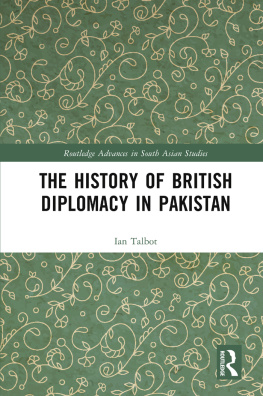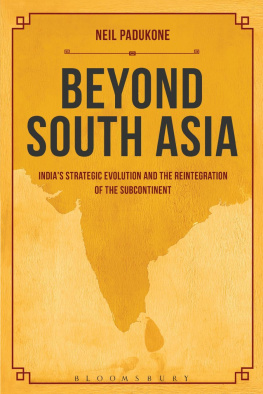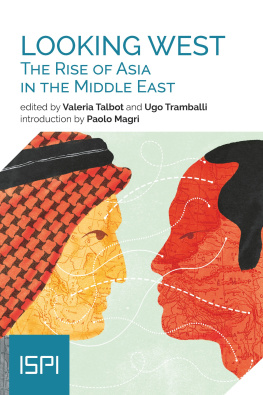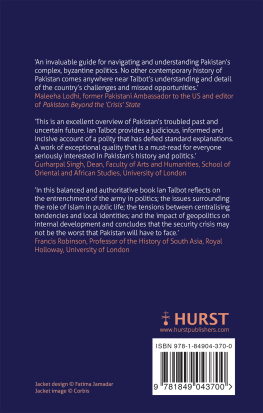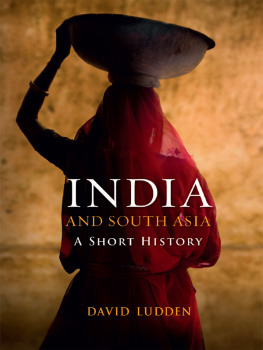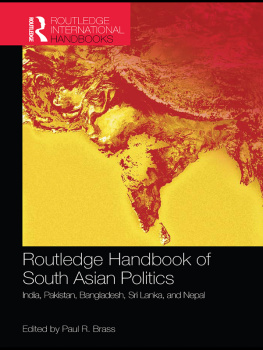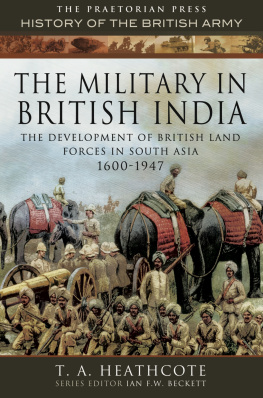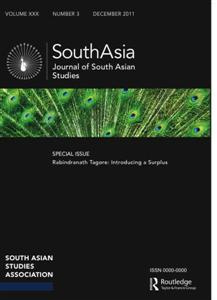A HISTORY OF MODERN SOUTH ASIA
A History of Modern South Asia
Politics, States, Diasporas
IAN TALBOT
Yale
UNIVERSITY PRESS
NEW HAVEN AND LONDON
Copyright 2016 by Ian Talbot.
All rights reserved.
This book may not be reproduced, in whole or in part, including illustrations, in any form (beyond that copying permitted by Sections 107 and 108 of the U.S. Copyright Law and except by reviewers for the public press), without written permission from the publishers.
Yale University Press books may be purchased in quantity for educational, business, or promotional use. For information, please e-mail (U.K. office).
Set in Electra type by Newgen North America.
Printed in the United States of America.
Library of Congress Control Number: 2015937886
ISBN 978-0-300-19694-8 (cloth : alk. paper)
A catalogue record for this book is available from the British Library.
This paper meets the requirements of ANSI/NISO Z39.48-1992 (Permanence of Paper).
10 9 8 7 6 5 4 3 2 1
CONTENTS
ILLUSTRATIONS
ACKNOWLEDGMENTS
My personal journey of South Asian discovery, which culminated in this book, began early in September 1977. I arrived at Delhis Palam airport armed with record cards, a portable typewriter, and a research plan. I planned to uncover the local roots of the Pakistan movements eleventh-hour breakthrough in the key Punjab province of British India. My thesis reflected the new emphasis on region and locality in South Asian history. During the long period since then, my understanding of the compelling history of South Asia has been enriched by innumerable colleagues, friends, and students. Foremost among these are Professor Francis Robinson, Professor Judith Brown, and Professor Gurharpal Singh. Encouragement has also come from colleagues within the Punjab Research Group; at the National University of Singapore; at the University of London; and within the British Association of South Asian Studies network, which I have chaired since 2011. I would also like to record my thanks to the numerous research staffers at libraries and archives that I have used over the years, principally in India, Pakistan, Singapore, the United States, and the United Kingdom. I would also like to record thanks to my institution, the University of Southampton, for making research leave available to write this work, and to the University of Warwick, which hosted me during this period. Any errors of fact or omission are my responsibility alone.
Finally, I owe an enormous debt to Lois, for her support, encouragement, and patience over the years of my involvement with South Asian Studies.
MAPS

1. South Asia region after 1971

2. India before the 1947 Partition

3. Contemporary Kashmir region
A HISTORY OF MODERN SOUTH ASIA
Introduction
South Asia is of immense significance to the wider world. It is home to a quarter of the global population and a third of the Islamic community. It is a major market and focus for overseas investment within which the rising economic power of India will become increasingly important in the Asian twenty-first century. By the end of this centurys second decade, Mumbai will be the second-largest city in the world, closely followed by Delhi and Dhaka, which is currently the fastest-growing global megacity. Rapid economic growth throughout South Asia, however, exists alongside mass poverty. Six hundred million South Asians subsist on less than $1.25 per day, the greatest concentration of poverty outside Sub-Saharan Africa. There are more than 300 million hungry and malnourished people in the region. Despite rapid urbanization, more than half of the population is still engaged in agriculture. Climate change is projected to reduce crop production in the region by between 10 and 40 percent by the end of the century.
The region is also an important strategic crossroads and has been the site of much bloodshed since British decolonization in 1947. Conflict between India and Pakistan alone has led to three wars and, in their wake, the development of rival nuclear weapons and delivery systems. By 2013, Pakistans production of warheads was estimated at 100120, Indias at 90110. It is clearly important to understand the history of this economically and strategically significant region.
The region displays immense variety in its climate, topography, and demographic characteristics. It includes some of the most densely populated and sparsely populated regions of the world. Populations are concentrated in the Indo-Gangetic plains and megadeltas of the region. Deserts and mountainous environments are largely uninhabited. Urbanization ranges from 35 percent of the population in Pakistan to just 11 percent in Bhutan. Myriad languages, religious traditions, and ethnic groups add to the regions complexity and diversity. The Indian 2011 census, for example, recorded more than fifteen hundred languages, thirty of which together were mother tongues for more than a million people. Hindi is the most widely spoken language in the region, where it is understandable in spoken form for Pakistans Urdu-speaking population. Within the great religious traditions of Hinduism, Islam, Buddhism, Jainism, and Sikhism within the region, there are immense varieties of expression, which can prompt sectarian conflict and violence. Alongside religion, ethnicity, and language are the other great sources of identity, which in the contemporary era have become increasingly politicized.
South Asias pluralism is the product of successive waves of migration and invasion in the region. The best-known and longest-lasting impacts have resulted from the invasions of the Aryans, Muslims, and British. The legacies of these invasions have been the source of much political as well as scholarly contest. It is important, for example, to set the British colonial tenure in the context of earlier intrusions. People from the region have also moved outward for trade and settlement, taking advantage of the monsoon winds to journey in the premodern era around the Indian Ocean rim. In the colonial and contemporary eras of globalization, large-scale migration has been mobilized, giving rise to what has become termed the South Asian diaspora.
The size and wealth of diaspora populations has multiplied in the past three decades. New Delhi, after years of condescension toward overseas Indians, has chased the brown dollar in its posteconomic liberalization phase. Remittances from workers in the Gulf, Europe, and North America prop up Pakistans parlous foreign-exchange reserves. Recent joint ventures in information technology between Indian and Mauritian companies can be understood only with reference to the historic Indian diaspora in Mauritius. Diasporas have, however, threatened as well as sustained their homelands. From the 1980s onward, overseas residents provided vital financial and propaganda support for Punjabi, Kashmiri, and Tamil separatist movements. Mainstream parties have also established overseas branches; London and Dubai are emerging as important hubs of Pakistani political activity. Despite the burgeoning of diaspora studies, this book represents one of the few accounts to bring together histories of overseas South Asians and their homelands.
India has experienced rapid economic growth since the abandonment of the government controls of the license-permit Raj in 1991. Indias rising global power resulted in its being ranked fourth in the world in GDP purchasing power, with a parity of $4,784 trillion in 2012. An increasingly wealthy middle class has eagerly snapped up consumer products. The age of austerity and frugality still evident in 1970s Delhi has given way to glitzy shopping malls. Millions of Indians, though, have been left behind; ostentatious wealth exists cheek by jowl with grinding poverty. Within the region, localities that possessed advantages of education and infrastructure in the colonial era have continued to thrive alongside poorer neighbors. The countryside lags behind towns and cities, with resulting rural-urban migration across the region. Wealthier areas of the Subcontinent can be compared in development terms with Latin America, while its poorer regions are akin to sub-Saharan Africa.
Next page

